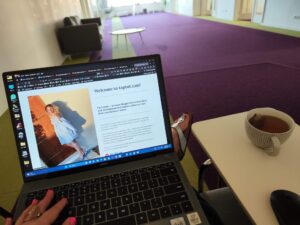Media monitoring has expanded enormously in recent years. For example, the role has shifted from pure media monitoring of messages to gathering insights that help make the right business decisions.
Also, production is being carried out on a media monitoring system that provides clear guidelines for the future based on these insights.
In other words, there will be a system that provides advice on business decisions based on media insights.
Although this is still in its infancy, it clarifies that media monitoring is changing and is increasingly similar to media intelligence when it comes to providing insight into this field’s future. In this article, we are going to discuss five trends and developments in the media monitoring field.
What is media monitoring?
Media monitoring is the organized and continuous monitoring of media on a subject, trend, person, or organization.
This can be done by means of media monitoring tools, which use software to extract information about the subject in question from various sources (content). Think of newspapers, journals, magazines, and online media (websites), radio, television, and social media. The purpose of this is to form a clear picture of what is written in the media about an organization, trend, subject, brand, person, or product.

Yes, I guess we can call it spying.
By following messages over a longer period, it is possible to make an analysis, and it is also possible to make the data visual.
Besides, media monitoring also contributes to current awareness. This is something like “internal news sharing” so that employees and stakeholders are aware of important media developments.
This information can provide added value when making decisions.
Trend 1: Integrated Platforms
Recently, media monitoring took place via various platforms: traditional media, social media, and journalistic contacts.
However, this has changed in recent years.
There is an increasing need for platforms that offer “everything,” so-called integrated platforms, and that need will only increase in the short term. The explanation for this lies in the fact that different media influence each other, react to each other, and become increasingly intertwined.
For example, the starting point of a post may be either
Twitter or a quality newspaper. When using a platform that only captures part of the media landscape, there is a risk of missing the start of a discussion and not responding quickly enough.
From this perspective, a platform must offer a wide range of media. Besides, it also provides time savings and convenience. It is not necessary to constantly switch between different platforms and compare findings.
Trend 2: The Fight Against Fake News
Fake news was instrumental in the election of President Trump and Brexit. Manipulating public opinion by spreading fake news is becoming more sophisticated and indispensable.

The industry is currently underway on pilots that can substantially combat fake news in the future. This is not about ignoring fake news. On the contrary, because monitoring the news for fake messages has a vital function from reputation management, namely filtering fake news and recognizing it as such, the relevance can be determined.
Moreover, we are working on systems that look less at the message’s content, but more at the sender. In concrete terms, this means that the route taken by the news is mapped out.
This clarifies whether bots are involved, what and who is the original source of the message, and therefore – which party is pulling strings.
Trend 3: The Advance of Artificial Intelligence (AI)
Artificial intelligence will help determine whether or not a platform is successful for a number of reasons. To begin with, artificial intelligence makes an essential contribution to the quality of information.
An excellent example of this is the figure of speech irony. Until recently, this was not recognized by platforms. This meant that ironic articles were considered positive if the tenor was negative and vice versa.
As a result, such messages polluted measurements of sentiment surrounding a brand or company. Through the use of artificial intelligence, such carelessness is increasingly removed, and the results become increasingly accurate.
Artificial intelligence can (and will) play a greater role in filtering available data.
For example, filtering the available data around the telecom company “BEN” is a lot easier with the help of artificial intelligence.
The AI application ‘named entity recognition’ is used for this. This application ensures that the system distinguishes between the telecom provider Ben and the verb conjugation ‘ben’.
Finally, artificial intelligence will play an increasingly important role in media monitoring in a general sense. After all, the amount of data is increasing, and the need to use systems that can perform complex operations on data sets in a short time also increases.
Trend 4: visualizing
Due to the growing flow of messages and the media that distribute them, an increasing amount of data has to be analyzed and translated into accessible insights. This is essential because, in many cases, this information is the starting point for further action.
Translating information and analyses into visuals has been playing a major role for several years and will only become more important within the platforms in the coming period.
This is not without reason, because visualization helps to gain insight into available data quickly. It provides the ability to organize and compare large amounts of data relatively easily using bar charts, pie charts, and timelines. And it helps discover patterns and trends and establish relationships.
Consider, for example, the insight into which certain route information has traveled and who is influenced by whom. In short, visualization is essential when it comes to ‘making sense of date’. Besides, visualization offers the opportunity to quickly visualize complex analyzes clearly, even for someone who is not involved with it daily.
Trend 5: Broader Role Within Organizations
In most cases, media monitoring is used within the fields of PR, marketing, and communication. But the employability of media monitoring is much wider. For example, media monitoring can also serve the government perfectly to measure public opinion on a certain topic and to use these findings in policy development. It is already part of daily practice at some government agencies and is expected to increase.
The business community is also increasingly discovering the possibilities of media monitoring.
For example, it is used for strategic development or research and development. In this case, we look at what topics customers find important, what trends are playing in the market, and what important developments there are in the field of regulation.
It is also used in crisis management or for competitive intelligence, which involves tracking the competition and benchmarking your own company or brand against those competitors.
Strategic Use of Media Monitoring
Achmea is a good practical example of the growing impact of media monitoring. The driving forces behind this are Accountability & Issue Manager Bertwin Tiemersma and Senior Expert Reputation Management Eelke Alkema. They have ensured that media monitoring is used as part of the reputation management policy. Insights from media monitoring are analyzed together with other data sources, such as real-time reputation research that Achmea conducts among its stakeholders.
When does which communication effort have an impact on the reputation of which stakeholder group? Achmea focuses on socially relevant topics that can have an impact on society. And therefore, relevant to the company itself. That is why it is important to be able to make adjustments early.
Examples of this are privacy, innovation, but also flooding and sustainability are themes that Achmea constantly monitors.
“Partly through media monitoring, we create insight into what is going on in society and its impact on Achmea’s reputation.”
Bertwin Tiemersma, Achmea
Data analytics expert. As an analyst and project manager, I have proven to be a strong leader and team player in maintaining a suitable workspace for workers and industries in the oil and gas sector.
By taking into account various factors, with the assistance of state of the art technologies and the utilization of Big Data Analytics.
This includes considering various aspects like volume, velocity, variety, veracity, value together with complexity.
With the recent advent of data recording sensors in exploration, drilling, and production operations, oil and gas industry has become a massive data intensive industry.






